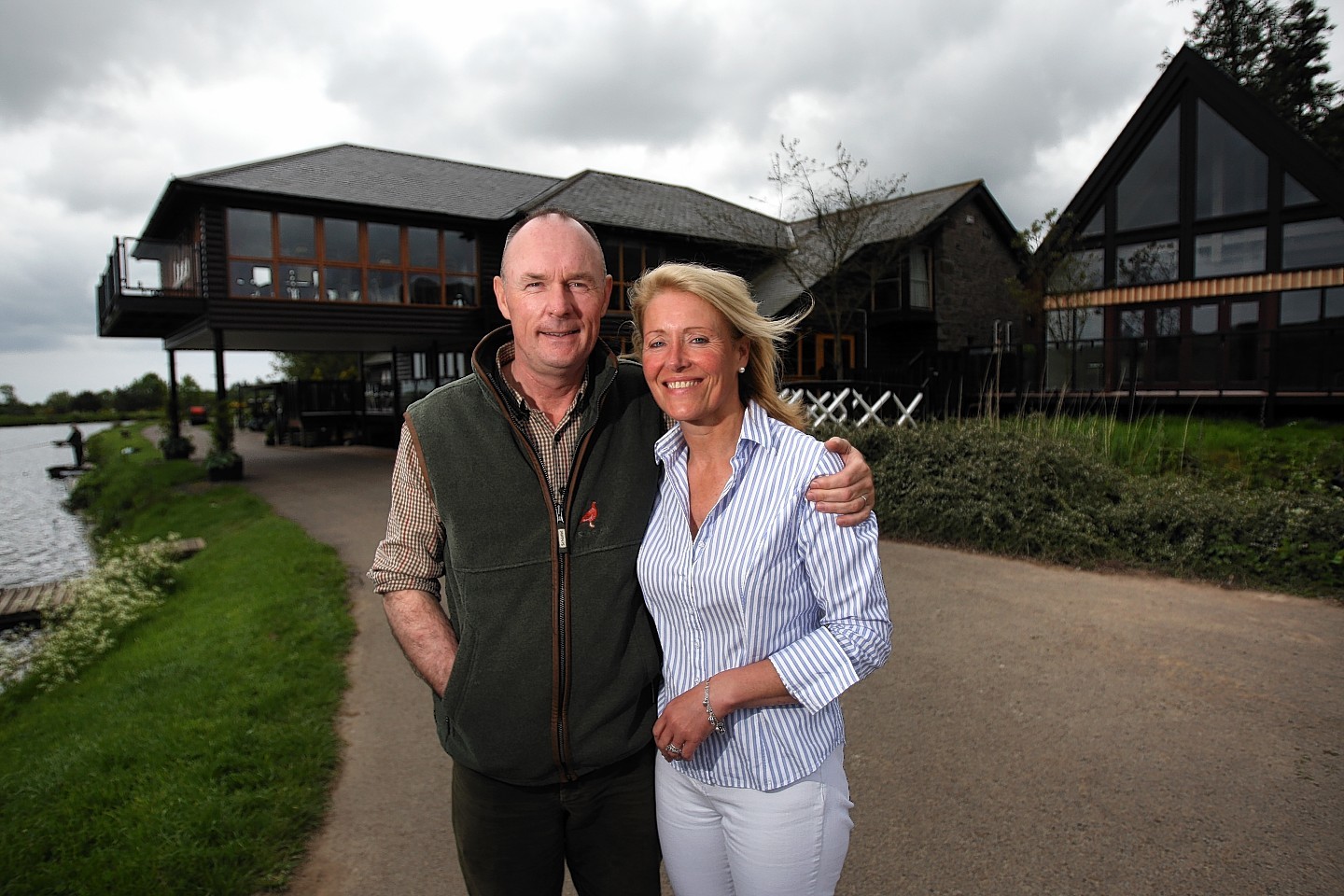For many farmers the prospect of trying something new is daunting to say the least.
However, this isn’t the case for all as one Angus farming family has shown.
Mike and Gail Forbes have taken several leaps into the unknown with the development of a luxury holiday resort and plans to build the first five-star hotel in Angus.
They have also taken the bold move to stop growing tatties and instead opt to grow maize for a new 249kW anaerobic digestion (AD) plant.
Mr Forbes, who is part of the family behind the East Coast Viners group, said he first looked into diversifying the farm business following a crisis in the pig industry back when the sow stall ban was introduced in the 1990s.
He said the industry went from killing around 350,000 bacon pigs a week to one which kills around 140,000 a week.
“That’s what really pushed me to diversify to the degree that I have done. I lost a lot of friends in the industry – people who plugged a lot of their pensions into the pig business,” he said.
As a result, the thinking behind the Forbes of Kingennie Resort began and nearly 20 years later the site, which lies on the outskirts of Dundee, consists of 14 lodges, a restaurant, bar, fresh water fishery and golf course.
“I started Kingennie in 1995 and built that up over the years to where we are today and two years ago I applied for planning permission for a world-class golfing development,” said Mr Forbes.
“It included a 180-bedroom five-star lodge, a world-class golf course, clubhouse and 160 houses.”
Detailed planning permission for the site was approved in April this year and the family said they will go to investors to sell the site following the independence referendum in September.
To facilitate the new development, the family has restructured the 1,200-acre farming business and brought together the strawberry enterprise to the same site as the pig unit.
The 700-sow pig herd produces both pigs for fattening and replacement females for other commercial pig units.
“It’s an ideal opportunity to bring everything together and utilise the dung and slurry for an AD plant,” said Mr Forbes.
“I went to Germany and studied the process (AD) and felt there was more production coming out of an AD plant than a windmill and the tariffs, at the right size, were far stronger.”
To feed his AD plant, Mr Forbes has been trialling different varieties of maize – something he admits has caused a bit of bemusement among his farming neighbours.
The aim is to quit tatties – all equipment will be sold next week – and grow maize across 140 acres for the AD plant instead.
“I firmly believe there is not a great future in potatoes unless you have economies of scale which is around 200-250 acres plus,” said Mr Forbes.
The family aims to have the AD plant up and running in October this year.
Mr Forbes said the plant will be fed an annual “diet” of 2,700 tonnes of maize, 16,000 tonnes of dung and 10million gallons of slurry.
In future, he said he hoped to use heat produced from the AD process in the strawberry enterprise, however at present the government’s Renewable Heat Incentive (RHI) subsidy is not available for polytunnels as they are deemed to be non-permanent structures.
In the meantime, excess heat will be used to dry woodchips and manure.
Mr Forbes said the ability to use the excess heat in the strawberry tunnels – something only feasible with the RHI support – would add £1,000 a tonne to his early-producing strawberries.
The AD plant will also provide a valuable digestate, which should reduce the farm’s fertiliser needs.
Cropping on the farm includes winter barley, winter wheat, spring barley, peas, broad beans and maize.
Mr Forbes said he estimates the plant will pay for itself in five years – this is based on an initial investment of £1.3million and estimates that it should return around £330,000 a year.
He said: “It requires one guy for four hours a day; it’s a very simple thing to run compared to tatties. And it will still pay for itself without the subsidies.”
